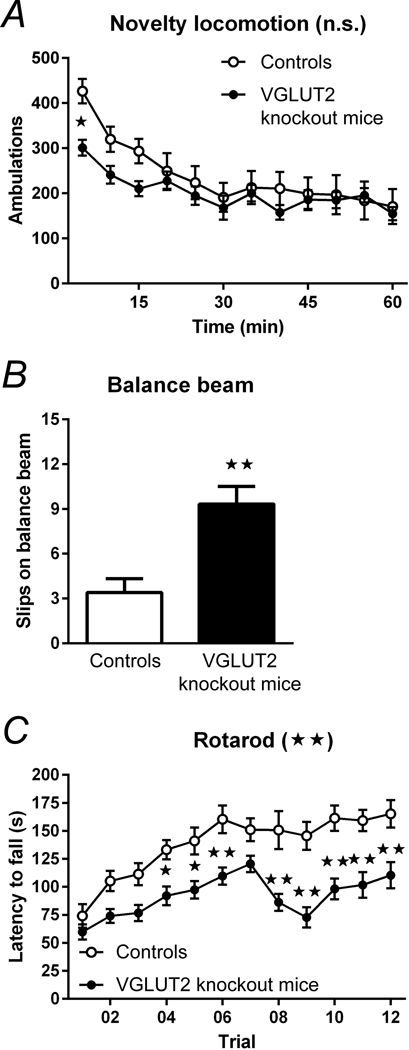Figure 6.

The effect of the thalamostriatal input on motor function was tested by using CAV2 viral manipulations in floxed (CAV2Cre-Slc17a6lox/lox) mice and CAV2Cre-Slc17a6+/+ controls. These VGLUT2 knockout mice specifically reduced excitatory signaling from the thalamus to the striatum. (A) VGLUT2 knockout mice (n = 8) showed no significant difference in spontaneous novelty-induced locomotion compared to control mice (n = 9). (B) VGLUT2 knockout mice (n = 9) had significantly more slips on the balance beam task compared with controls (n = 5). (C) VGLUT2 knockout mice (n = 17) performed significantly worse over time on the rotarod apparatus as compared with controls (n = 11), indicating an impairment in learned motor behaviors and innate balance. Data are shown as mean ± SEM. *p < 0.05, **p < 0.01, ANOVA. Statistical significance of genotype effects (repeated-measures two-way ANOVA) are shown in the headings of panels A and C (not significant, n.s.; **p < 0.01). Reproduced with permission from Melief et.al., npj Parkinson’s Disease. 4:23 (2018). Minor changes were made to the figure legends. http://creativecommons.org/licenses/by/4.0/
